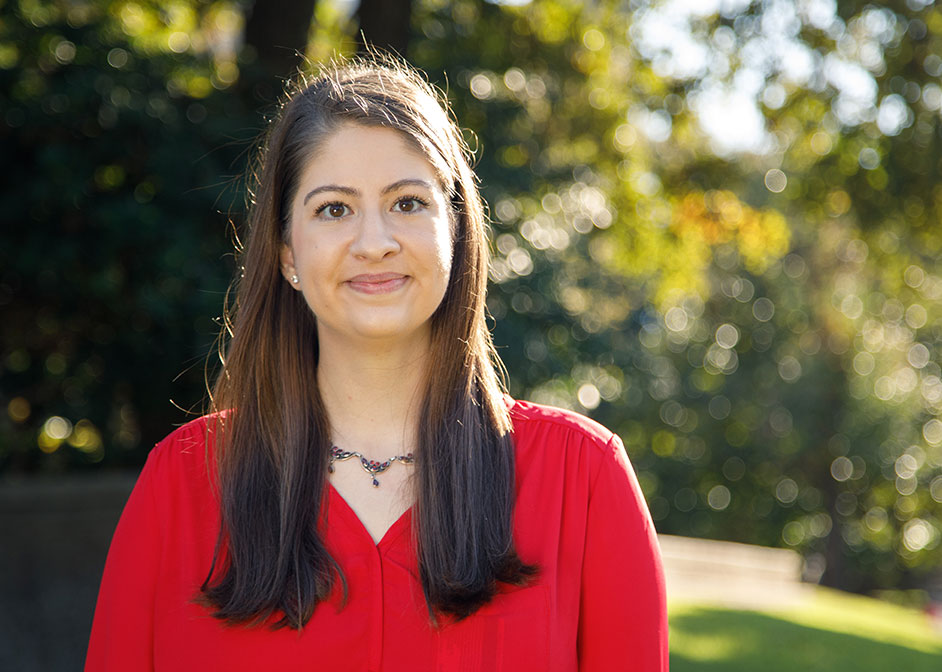Project Focuses on Impact of Extreme Drought on Emissions from Vegetation
Scientists use complex models incorporating information about the earth’s land, atmosphere and oceans to better understand the physical world around us, but until now, information about how those systems respond to periods of extreme drought hasn’t been included.

That is changing as scientists increasingly understand that climate change is leading to periods of more severe weather, including extreme drought. Elizabeth Klovenski, a Ph.D. student at the University of Houston, has received a three-year $165,000 NASA fellowship to support her proposal to incorporate predictions of how emissions of biogenic volatile organic compounds from trees and other vegetation will be affected by extreme drought into a climate model developed by the NASA Goddard Institute for Space Studies, the GISS ModelE.
The Advanced STEM Training and Research Fellowship is intended to help develop the next generation of scientists while encouraging work on NASA priorities. Klovenski’s award includes the opportunity to work at Goddard for eight weeks each year.
“We just don’t understand how earth systems will work under extreme drought conditions, how the different aspects of land and atmosphere will interact,” she said.
The 2011 Texas drought offered some insight into the complexity: Klovenski’s family has a cattle ranch and, like other ranchers, had to sell cattle in response to the soaring price of feed. But that was just a visible example of the impact. “A lot of people were so focused on there being enough water for animals and for plants, that they didn’t realize the air quality was getting worse,” she said.
Klovenski works with Yuxuan Wang, assistant professor of atmospheric chemistry in the UH College of Natural Sciences & Mathematics’ Department of Earth and Atmospheric Sciences. Wang’s lab works on the modeling of atmospheric composition and interactions between air quality and climate change; Klovenski’s first experience with modeling came on a project for the Texas Commission on Environmental Quality to study particulate matter concentrations in San Antonio.
The GISS ModelE project is more complex than the model used for that project. Klovenski will work with two technical advisors from NASA, Susanne E. Bauer, research physical scientist at Goddard, and Kostas Tsigaridis, a research scientist at Goddard and Columbia University.
The project involves biogenic volatile organic compounds, or BVOCs, which are emitted by vegetation and are known precursors to ozone and particulate matter. But while people have long known that BVOCs are important, Wang said the impact of extreme drought on the emissions has only recently begun to be understood, with new algorithms developed to attempt to account for that.
Klovenski will incorporate those algorithms into the GISS ModelE, which Wang said could improve scientists’ ability not only to understand how drought stress on trees will impact air quality and atmospheric composition but also their understanding of how that will feed back onto drought and other physical conditions, which can potentially improve the prediction of extreme drought.
“We need better models,” Wang said.
- Jeannie Kever, University Media Relations